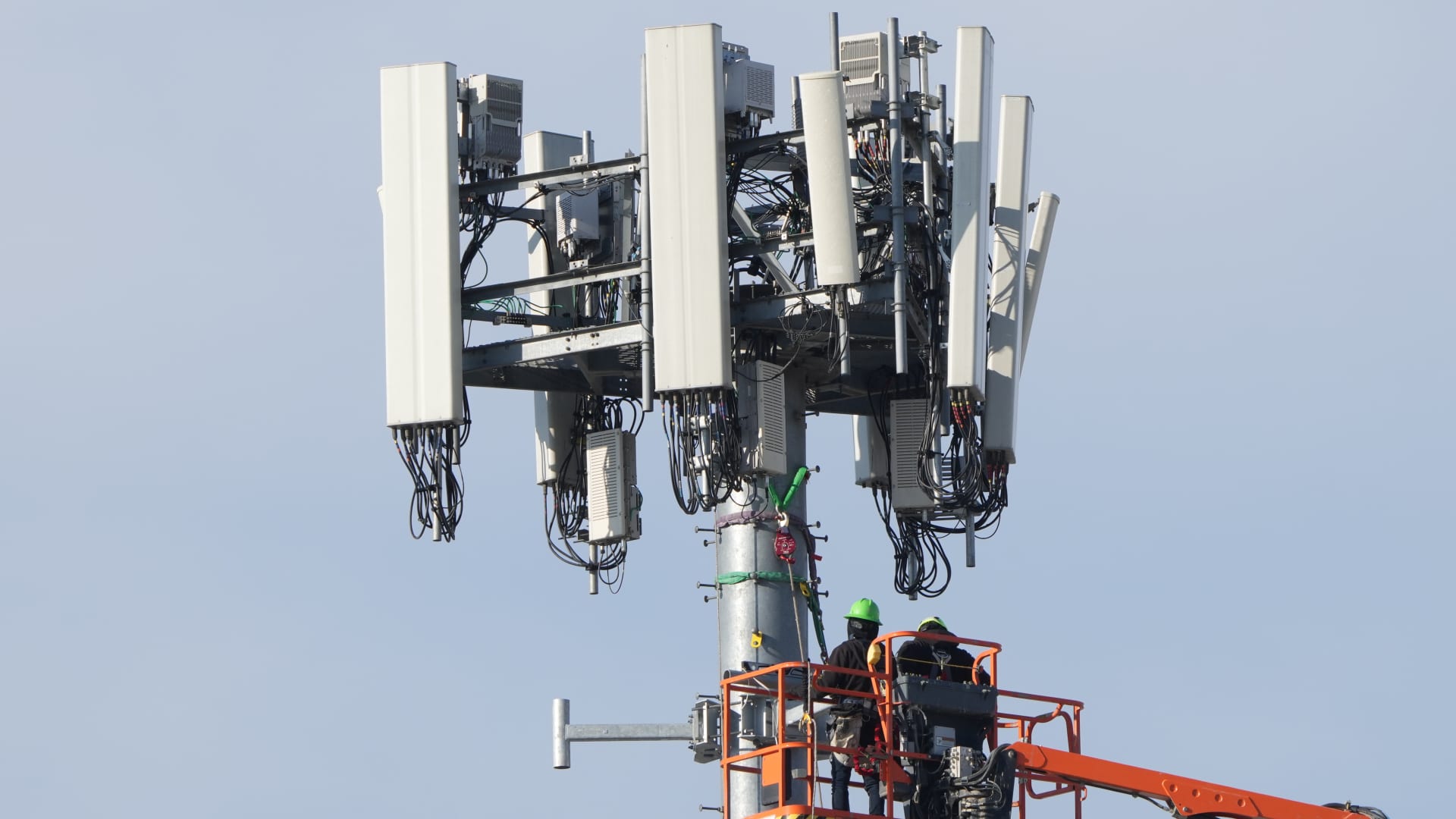
- Verizon and AT&T turned on a major new part of their 5G networks Wednesday.
- The networks use wavelengths called C-band to cover a large part of the country with wireless service that should be noticeably faster than current 4G service.
- People with compatible phones could see the network symbol at the top of their smartphone screen change Wednesday and access peak download speeds 10 times faster than an LTE network.

Verizon and AT&T turned on a major new part of their 5G networks Wednesday, the culmination of a yearslong process that saw both carriers invest billions in spectrum and equipment to upgrade their networks.
The networks that lit up on Wednesday are using wavelengths called C-band to cover a large part of the country with wireless service that should be noticeably faster than current 4G service.
We're making it easier for you to find stories that matter with our new newsletter — The 4Front. Sign up here and get news that is important for you to your inbox.
Verizon says 90 million people will get access to the new 5G service this month in major cities including New York, Los Angeles and San Francisco. AT&T said it plans to cover as many as 75 million people with its C-band network by the end of the year.
The rollout brings to fruition major 5G investments from both carriers. Verizon spent $45.5 billion in a government auction last year to secure the rights to the wavelengths it's using for its network. AT&T spent more than $23 billion. The carriers have since spent additional billions to actually build the networks and install equipment on cell towers.
"We've invested — just to get the spectrum, some $40-odd billion. And then we've also had to kick money into the kitty to help clear the spectrum. So you know, we're looking upward of $53 billion," Verizon CTO Kyle Malady told CNBC. Verizon will spend $10 billion over the next three years to continue building its network, he said.
Money Report
The 'Goldilocks band'
Some forms of 5G were already available to wireless subscribers in the U.S.
Verizon and AT&T already offer two classes of service they market as 5G. Low-band service covers large areas, but only at about the same speeds as before, while millimeter-wave service offers much higher speeds, but only over small areas, such as street corners or sports stadiums.
T-Mobile, the third major carrier, has offered "mid-band" 5G since 2020 using different spectrum on the 2.5GHz band it acquired when it bought Sprint. T-Mobile says its network covers 186 million people in the U.S.
But the C-band networks going online Wednesday are different. They use newly available wavelengths, between 3.7 and 3.98GHz, that are capable of both traveling long distances and carrying enough data to deliver faster internet connections.
The unique properties of these wavelengths led to their substantial price at auction, and they were often called the "Goldilocks band" in the industry because they are perfectly situated for 5G services.
"It's excellent right down the middle. You have a great amount of bandwidth, it propagates well and it goes through buildings," Malady said. "I give credit to the U.S. government, they put a lot of spectrum up for auction. This rarely comes along. And that's why we were so aggressive in the auction to get this."
The C-band networks were supposed to be turned on in December, but the rollout was delayed twice because of Federal Aviation Administration concerns that their wavelengths could interfere with tools pilots use to land safely.
Verizon and AT&T both said on Tuesday that they would delay launching the service near airports while the issues are resolved, but that their new networks would be turned on everywhere else.
"We are frustrated by the FAA's inability to do what nearly 40 countries have done, which is to safely deploy 5G technology without disrupting aviation services, and we urge it do so in a timely manner," an AT&T spokesperson said in a statement on Tuesday.
Now Verizon and AT&T will need to show that these investments can pay off in the form of better wireless service to encourage customers to opt for more expensive 5G plans and open new markets, such as households replacing cable internet access.
"Where's the return on 5G investment?" asked Credit Suisse analysts last October. "The generational change from 4G to 5G has led to more capable wireless networks, but the benefits to operators seem less than hoped (and less than hyped.)"
"While 5G defensively helps networks keep up with traffic and consumer expectations, it is not the factor pulling consumers up operators' tier lineup," Credit Suisse analyst Douglas Mitchelson wrote.
Verizon announced earlier this month new plans that include 5G service with unlimited data. AT&T unlimited plans also include access to 5G service.
Look for the 5Guw or 5G+ symbol on your phone
Malady said that Verizon's rollout could take as long as 12 hours as the network lights up from the East Coast to the West Coast.
People with compatible phones could see the network symbol at the top of their smartphone screen change Wednesday and access peak download speeds 10 times faster than an LTE network, according to the carriers.
For Verizon subscribers connecting to the new network, they will see "5Guw," for 5G ultra-wideband. AT&T subscribers will see "5G+."
Phones that can support the new network include Apple's iPhone 12 and iPhone 13, and newer Samsung Galaxy phones. Google's Pixel 6 will gain certification soon, a Verizon representative told CNBC after publication. Users will also need to be on a plan that includes 5G service.






